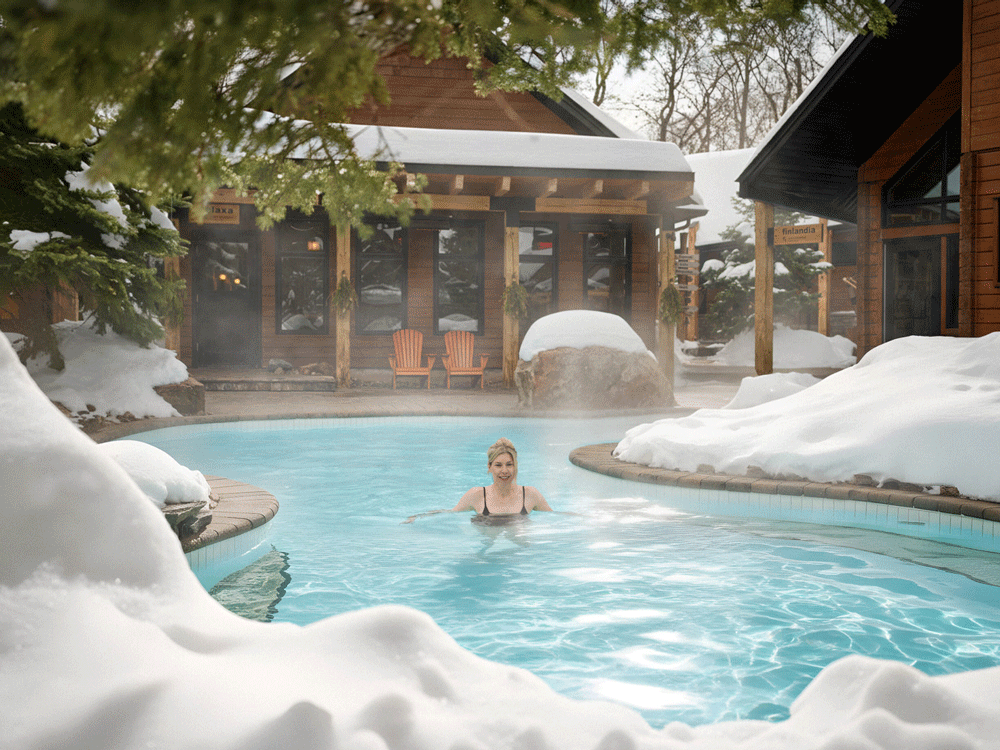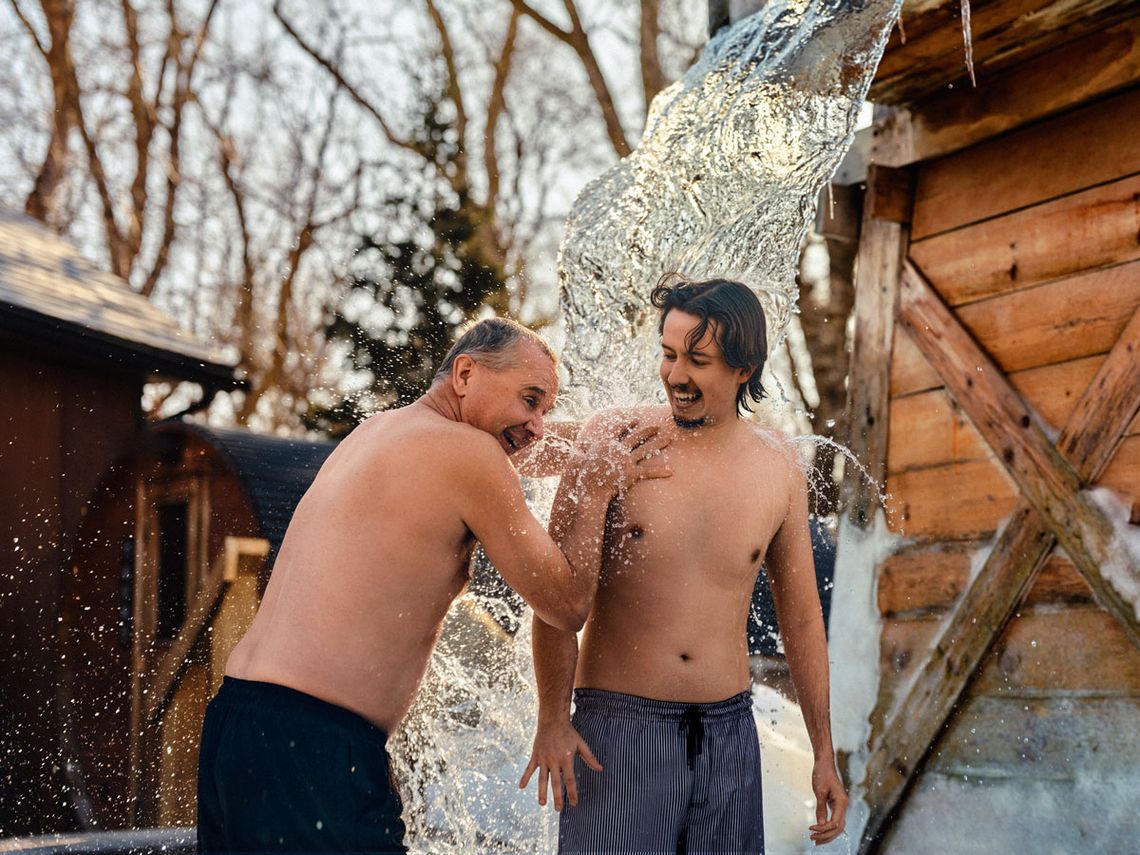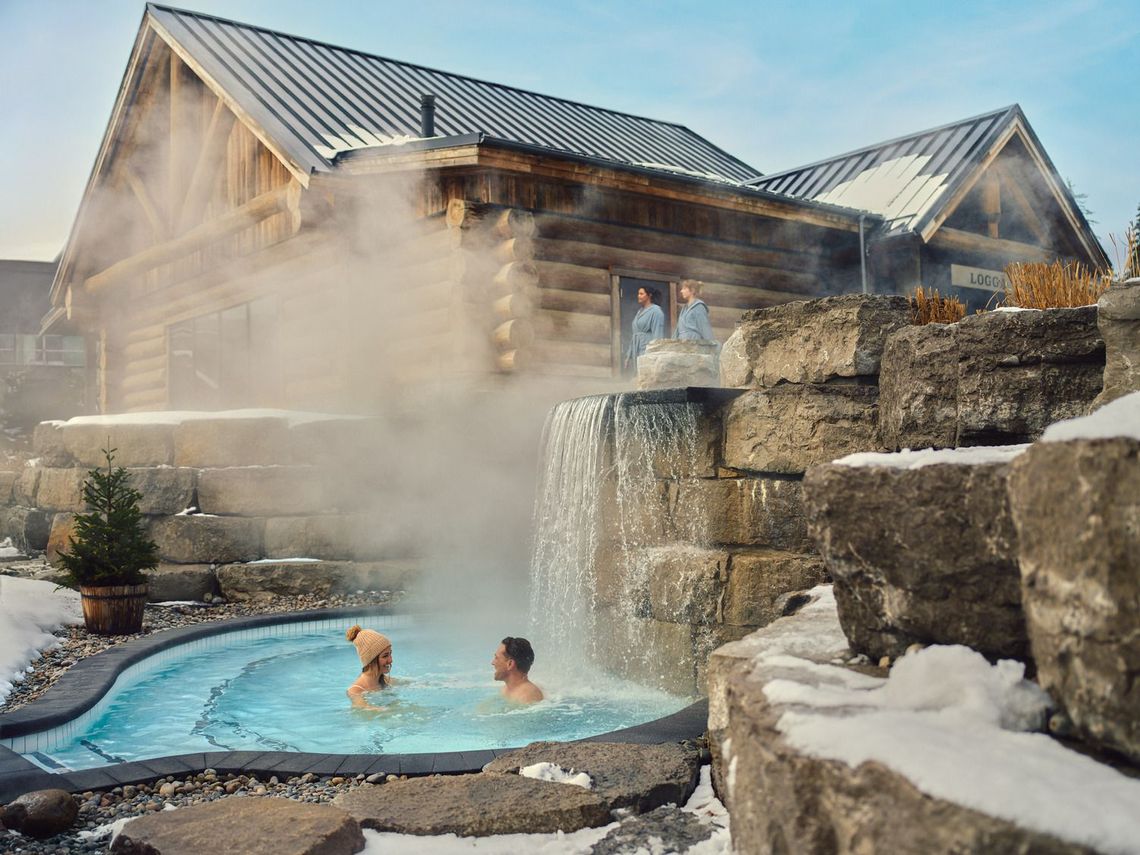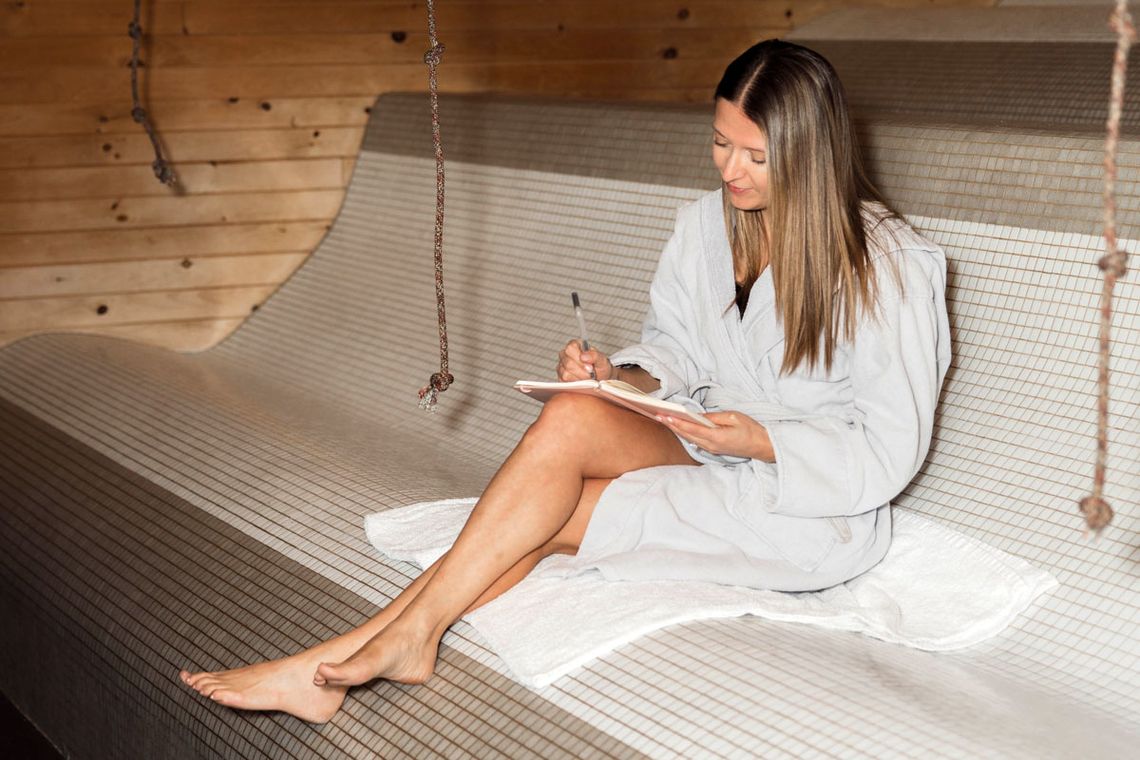What is Aufguss?


In the simplest of terms, an Aufguss ritual is a wellness experience that occurs in a sauna. It is led by an Aufgussmeister—or in our case, a Rituals Artisan. The artisan pours essential oil-infused water onto the sauna’s hot stones and uses rhythmical towel movements to circulate fragrant air around the sauna.
Some rituals are accompanied by music whilst others let the sounds of towel-waving dominate the experience. No two Aufguss are exactly alike. Here, at Thermea Spa Village, our artisans place snowballs infused with essential oils on the burning stones rather than pour water—a nod to our northern Canadian heritage.
Many types of Aufguss exist and can be learnt in dedicated European schools. The three most commonly known are “classic,” “show” and “standard” Aufguss. A “classic” focuses on relaxation and health benefits. The “show” is all entertainment whilst the “standard” is a mix of the two.

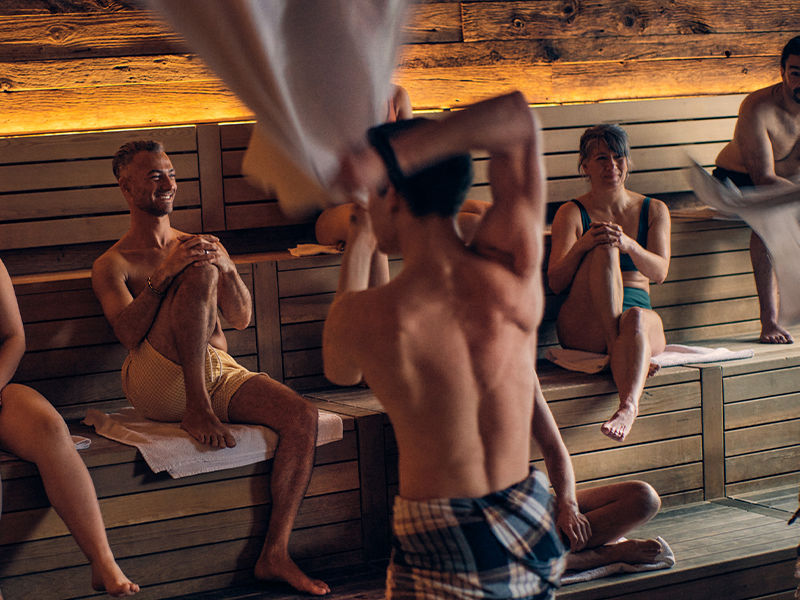
Around The World


Saunas are commonplace all over the world. A standard offering in gyms, hotels and spas worldwide. However, when it comes to the “how-to” of saunas, experiences differ between Eastern, Central and Northern Europe as well as the rest of the world. Whilst Finland, Austria, Germany, Italy, Sweden, Norway, the Netherlands, Poland and Hungary—to name a few—see sauna-going as a way of life that includes deeply social and creative experiences, the sauna experience outside of Europe is often less inspired: a means to an end. A great part of the European appeal of sweat culture is the Aufguss. From schools to competitions and events, an Aufguss ritual is a cultural event.
The Aufguss Ritual’s History


As far as Aufguss goes, it is commonly believed to have originated from the need to replace the air inside a sauna. Being enclosed spaces where people sweat heavily, a need to re-oxygenate the space occurs. Every hour or so, a window or door would be opened. To restore the temperature and the humidity effectively, water would be thrown onto the sauna’s hot stone and a rotating towel would be used to distribute the vapour—the ancestor of today’s Aufguss was born.
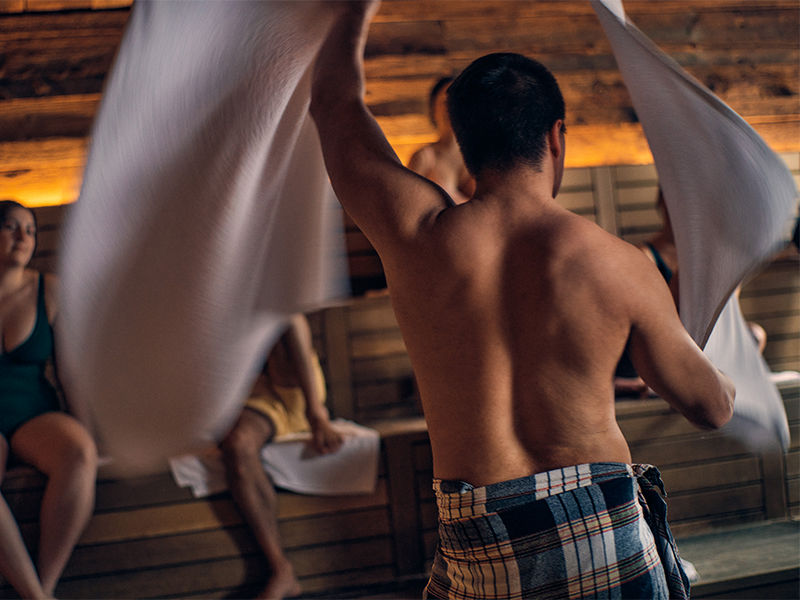
The Benefits of Aufguss


As one finds themselves in hyperthermia, the body starts storing heat, dilating pores, eliminating toxins and cleansing the body. As sweat beads on brows and trickles down, a state of meditation, introspection and calm are achieved. In a light feverish state, the body reacts by strengthening the immune system.
During an Aufguss, aromatherapy is introduced through pure essential oils. These volatile and aromatic plant derivatives can act on body and mind. For relaxation: pine, sandalwood, cypress and vetiver. For emotion: lavender, chamomile and jasmine. For invigoration: eucalyptus, mint, lemon, orange and bergamot, to name a few.
After extreme heat, comes cold. Cooling off after time spent in a sauna is a necessity. The three steps of the thermal cycle are as follows: hot, cold, rest. The Aufguss ritual is the perfect first step. Then, the thermal shock of walking through a cold waterfall or plunging in a cold pool releases adrenaline. The following period of rest—in a hammock, a lounge chair or by a roaring fireplace—releases endorphins, the happy hormone.
And now, the only thing left for you to do, is experience it for yourself.


